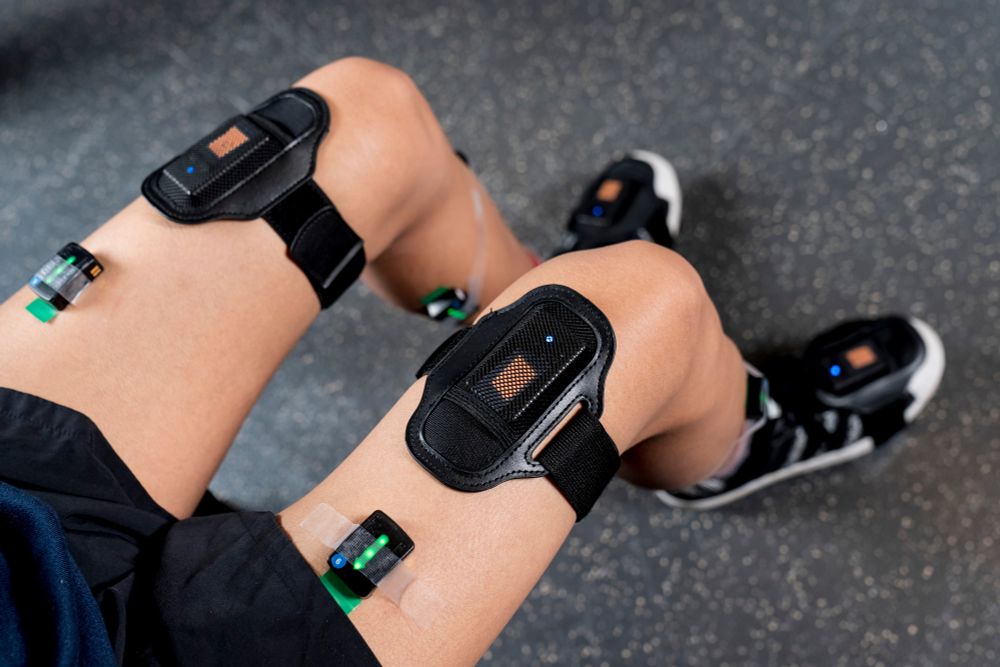
A research participant wears two types sensors on their legs. Smaller EMG sensors measure muscle electrical activity and are placed on each thigh, calf, and shin. Larger IMU sensors measure the limb's position in space and are placed just above each knee and on top of the each foot. The image is taken at the Seáñez biomedical engineering lab at Washington University in St. Louis.

A research participant is seated in a chair in front of a large projector. Projected onto the screen is a game similar to Fruit Ninja wherein the player uses a cursor to slice fruit that appears onscreen. The participant is using their legs to play the game by way of IMU sensors that measure the position of the participant's legs in space and translate that into onscreen cursor movement. The image is taken at the Seáñez biomedical engineering lab at Washington University in St. Louis.
We use a variety of sensors in our lab.
The smaller EMG sensors measure the muscle's electrical signals while the larger sensors collect IMU data about the limb's orientation in space.
These can be used to control a cursor and conduct motor skill training exercises.
